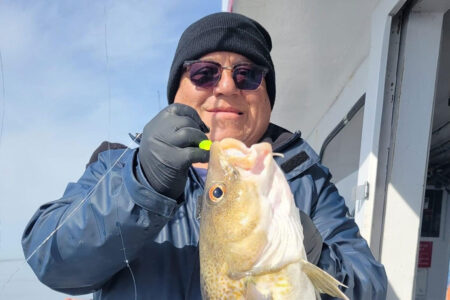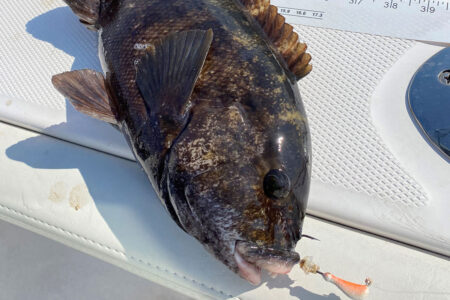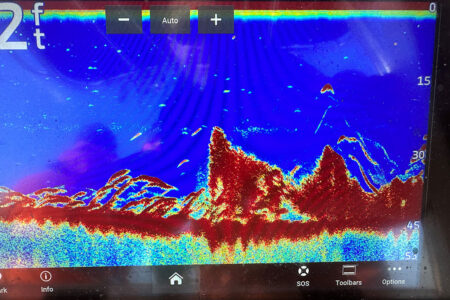While finding a slot may be a bit like throwing darts, there is a tactical approach to hitting a bullseye.
The new “slot striper” management efforts along the Atlantic Coast should prove fruitful in protecting an increased number of large breeders, in turn, sustaining and hopefully rebuilding the bass population to that of the 2000s.
Perhaps lost in the fray is where to target slot-sized bass.
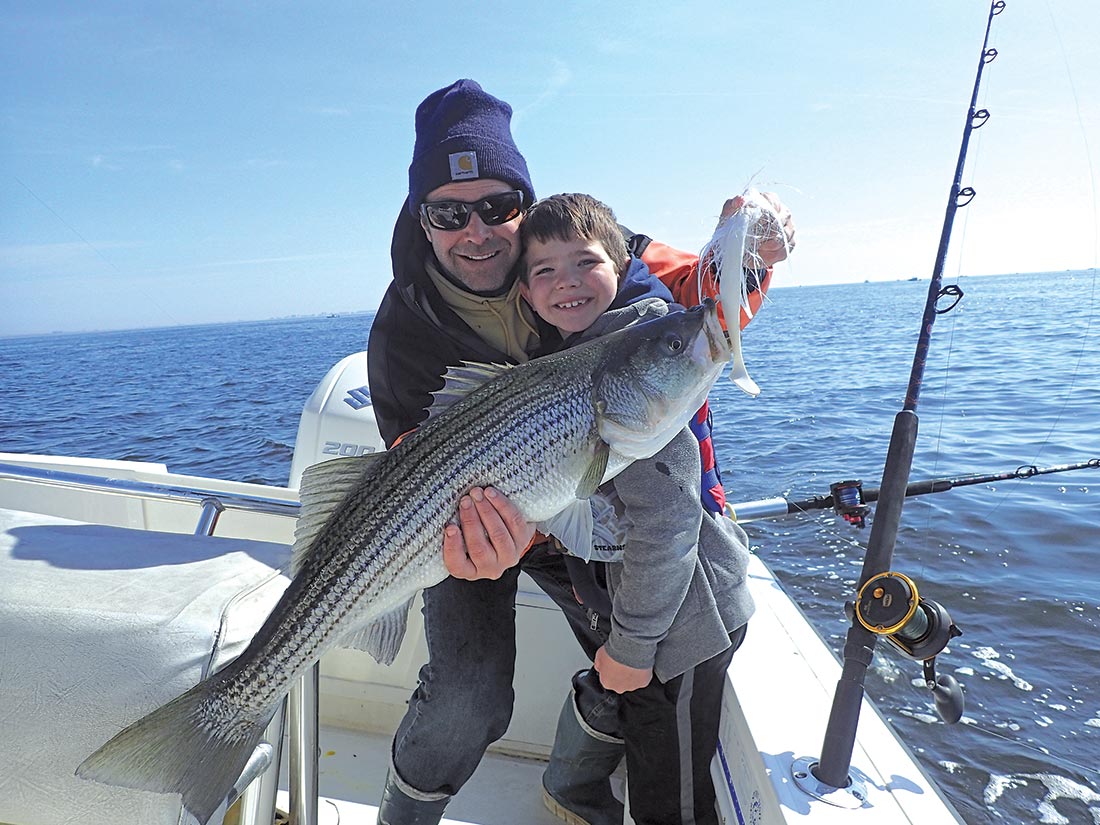
Any East Coast river that flows from salt to fresh, and is proven to be breeding turf, should see a dramatic influx during the spring, with shorter local fish joined by male and female bass heading upstream to procreate. These fish are mixed in size and range from less than 28 inches to over 35 inches; but there does exist a large group of fish that falls in the slot range. Bloodworms, white perch chunks and eels work well when located on the bottom, while surface plugs, poppers and paddle tails take fish up top.
Likewise, the large bay complexes closest to the ocean, and that lead to the rivers, catch fire in the spring. Regional hotspots like Raritan Bay and the upper Delaware River were already stealing the striper show in April. Live bait, all trolling methods from diving plugs, to wirelining spoons, to pulling mojos will and has produced fish – and sometimes epic catch and release days. Anglers can expect to catch fish in the slot size in this fishery, along with shorts and larger cows.
Anglers should remember to handle all striper releases with care. If caught on a mojo or spoon, I like to simply grasp the lure, unhook the fish and let it kick away happily. If I’m taking a photo, I try to set up the image quickly, avoiding contact with the gills before sending the fish back. Trolled fish in the spring usually come up vivacious and full of spunk. There is the extreme minimum of mortality on a cold water, trolled bass in spring.
Back bay systems that aren’t connected to a river will also gain momentum during April and maintain steam into May as well. These aren’t spawning routes, but many bass cruise the salty sods and rips that are abundant in these nurseries. The bays, fed by local inlets, are loaded with short bass, but also provide residence for fish into the mid 30-inch range. The back bays and tidal creeks are great locales for tossing artificial baits to points, sods, drop-offs or flats. What’s more, live bait such as spots can be drifted in the channels, over rough bottom or through rips.
To catch ocean slots, it’s best if the stripers are feeding on small baits such as rainfish, anchovies, peanut bunker or sand eels. Slender jigs, metals and plastics work wonders on these fish. When stripers are turning their nose up at these offerings, I turn to Berkley Gulp jerk shads or nemesis offerings on a half-ounce jig head to achieve bites. And if fishermen go on the troll, umbrella rigs with sand eel imitations will stack up numbers fast.
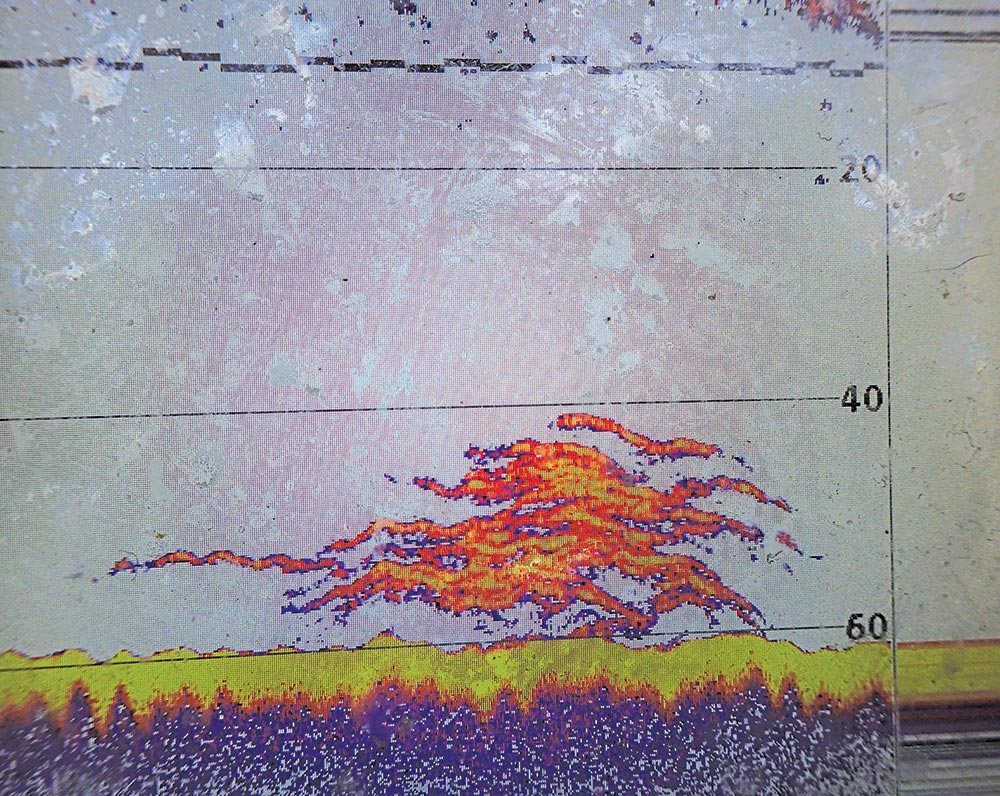
Anglers that learn to maximize use of their sounder will have enhanced success by understanding what they are looking at on the screen. Captains can determine what each kind of bait is and how dense the schools are. For example: sand eels look much different than dense schools of bunker. And striped bass size can be estimated by observing the length of the arches on the bottom machine. Learning how to use the fishfinder will help fishermen locate more slot bass.
When the ocean-run, bunker schools begin to entice migrating bass, anglers are more likely to run across large stripers that tape out greater than the upper slot range, therefore requiring careful release. Be that as it may, many schools of bass feeding on menhaden will have bass of varied size, which is also a positive sign for the future of the fishery. It has not been uncommon for boaters to land cows over 40 inches and fish from 28 to 35 inches from the same school. Anglers providing a little elbow grease can cast swim shads and surface poppers for success. Livelining bunker is a spring and summer favorite when the bass are the menhaden schools.
As summer moves along, dragging eels through rips, under bridges and in boulder fields will catch every size fish available, including slots.
